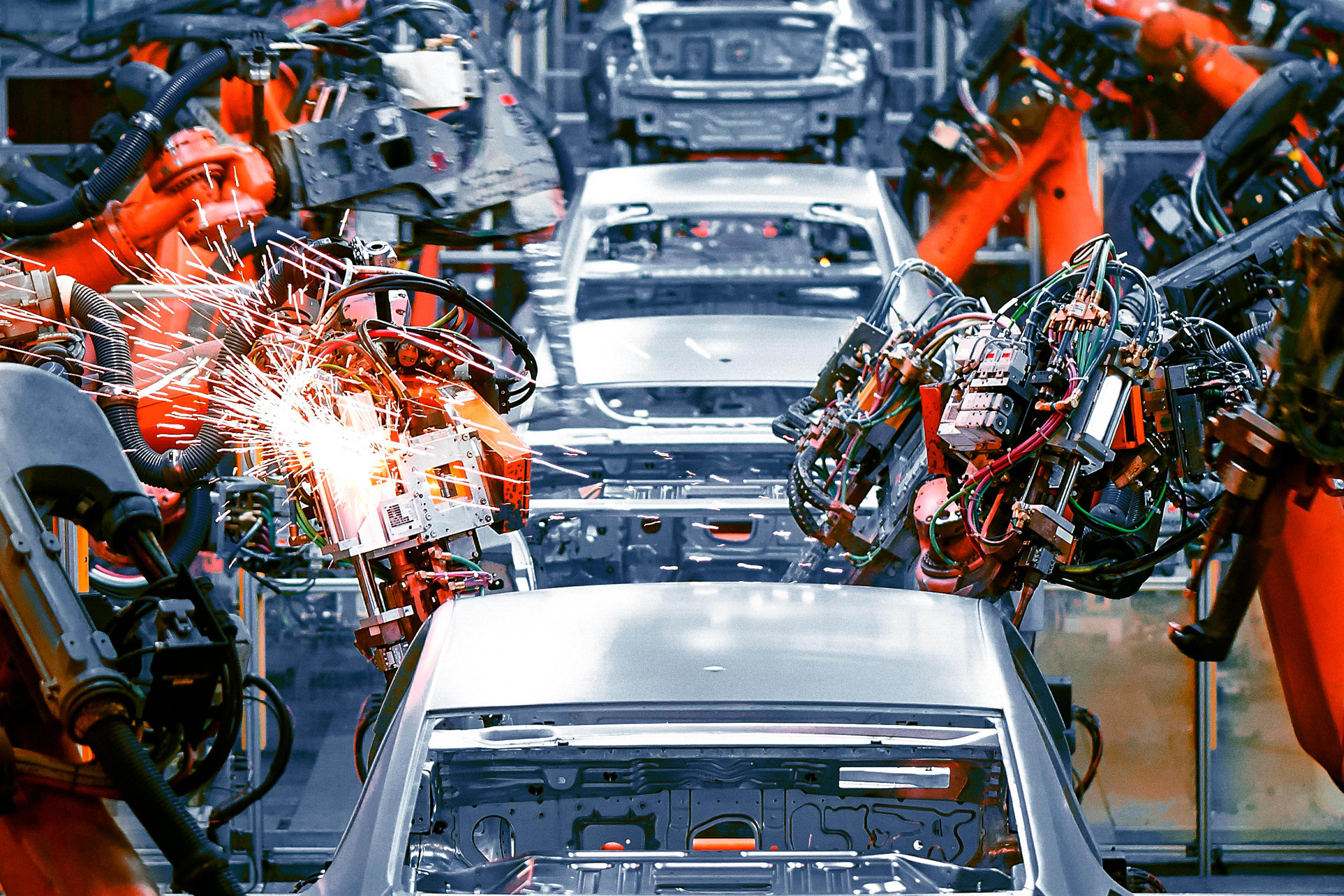EY refers to the global organization, and may refer to one or more, of the member firms of Ernst & Young Limited, each of which is a separate legal entity. Ernst & Young Limited is a Swiss company with registered seats in Switzerland providing services to clients in Switzerland.

Software-defined vehicles space is at turning point: OEMs and suppliers need to move from the storming to the performing phase
In brief
- This study explores the hyper-accelerated software-defined ecosystem and the roles that established OEMs and
Tier 1 suppliers in the automotive industry can play in this market. - Learn what OEMs and Tier 1 suppliers need to consider when it comes to the potentials and risks in the SDV transformation.
- Understand the three key steps to take for a successful transformation.
Incumbent automakers and suppliers are at a crucial turning point in the much-discussed software transformation: The time for experimenting with new technologies, partnerships and business models is over and fully focusing on the commercialization of Software Defined Vehicles (SDV) as top priority. After all, the coming phase of the transformation will determine whether traditional OEMs and suppliers can manage the leap to "automotive software companies" and maintain their central role, or whether they will have to leave the field to tech players and new, digitally native automakers from China or the USA. The clock is ticking.
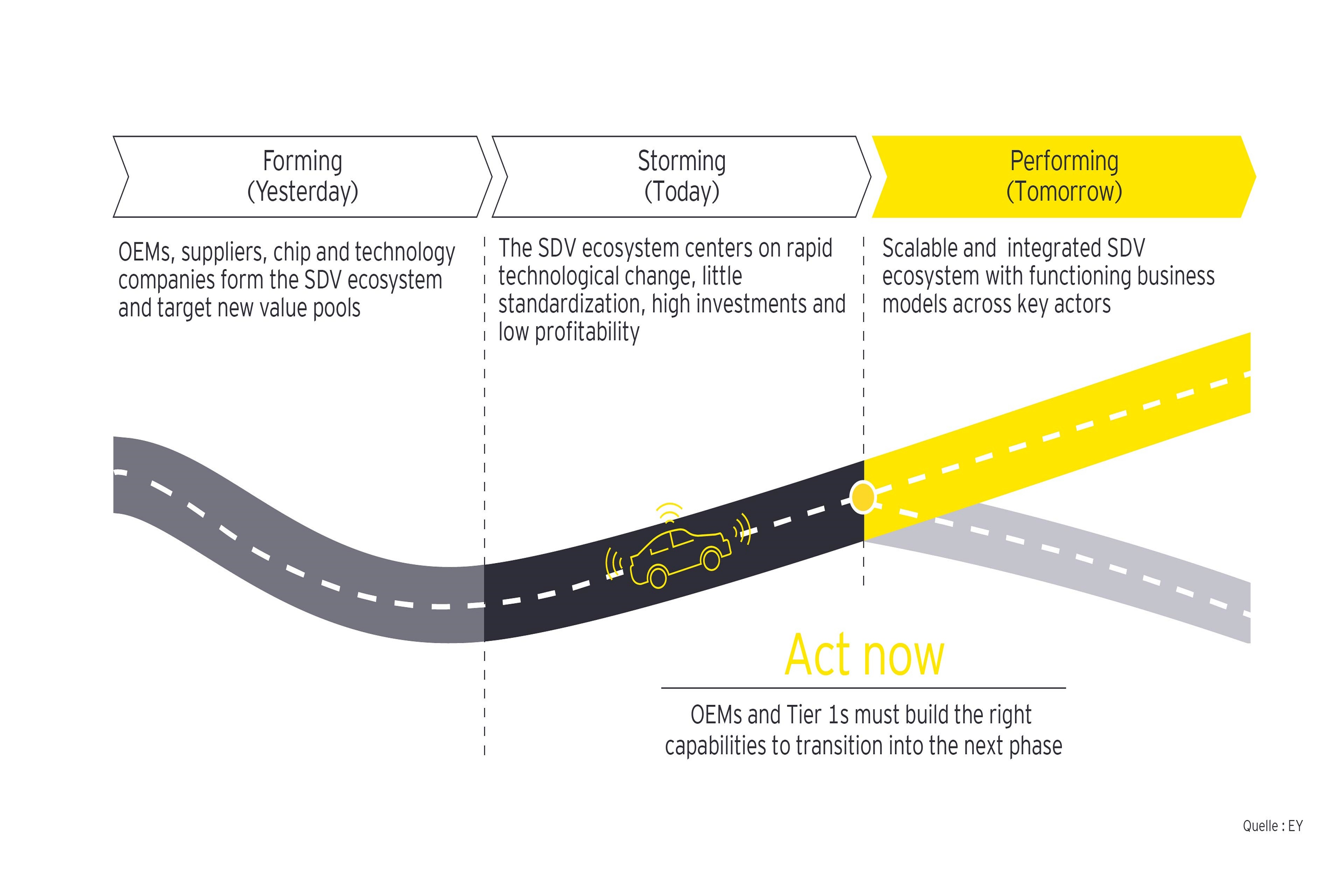
The automotive industry is once again at a crossroad. After the hype phase around the SDV, it is now about building an ecosystem - and a lot of money: the market for automotive-relevant software alone will grow to a value of 118 billion US dollars by 2030. For the key players in the automotive industry, this means systematising and concretising their strategies, measures and activities.
Car manufacturers are at a crossroad when it comes to software defined vehicles
Traditionally, automotive companies have been responsible for hardware, while software expertise has mainly resided with tech companies. Now, big car manufacturers must decide whether they want to take a leading role within the newly emerging automotive software ecosystem. To do this, they need to distinct between buzz from today‘s turbulent market discussion around SDV, identify truly impactful business models, develop a clear transformation strategy to transition from today‘s storming phase to the performing phase and most importantly start their transformation journey now!
Stumbling blocks for OEMs in the SDV transition
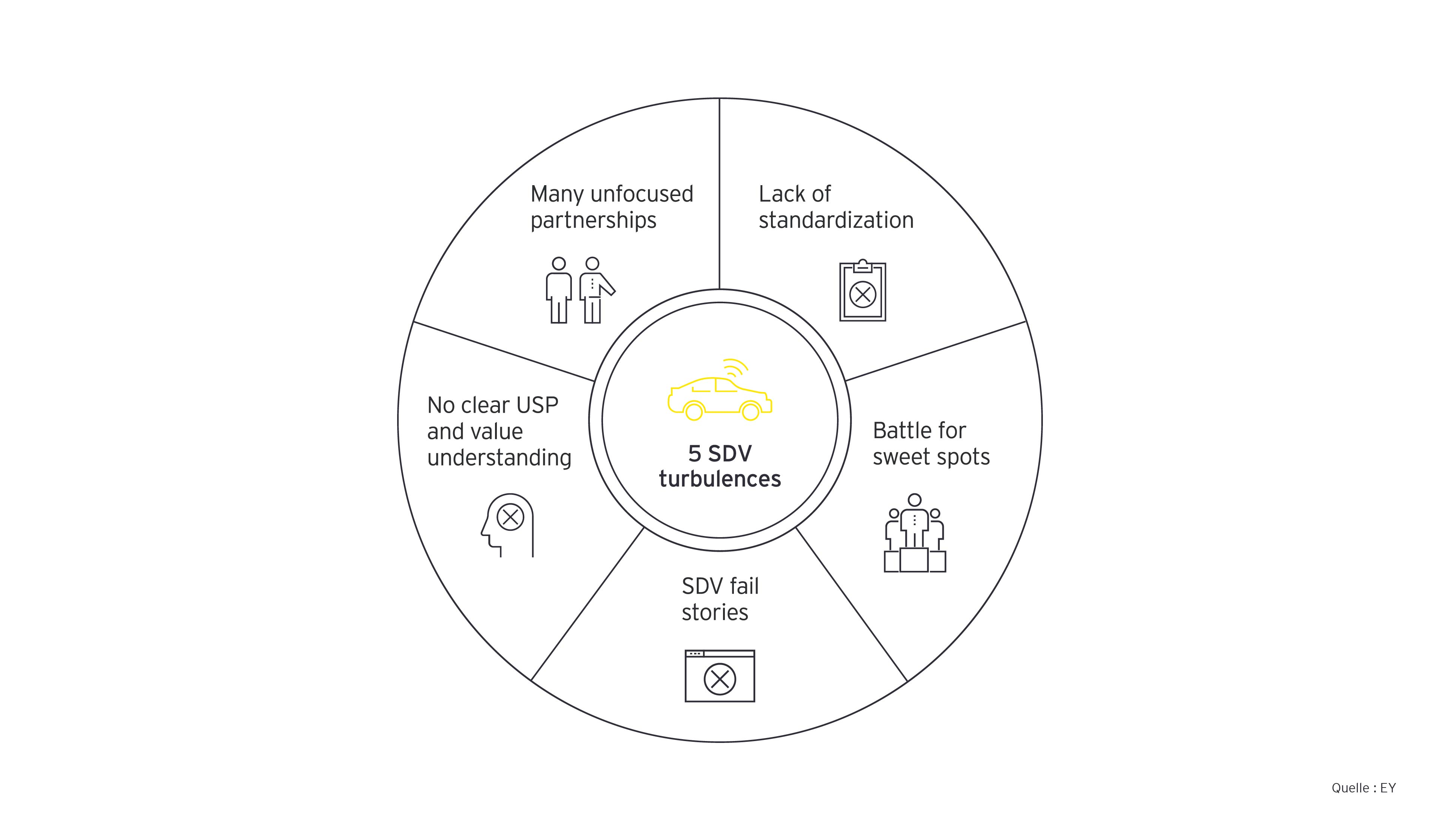
SDV transformation comes with challenges for OEMs: The industry is lacking standardization and the zig zag course between open source and proprietary software hinders innovation and scalability in automotive software. Additionally, the SDV field is very competitive. The study identifies battles for sweet spots in specific areas in particular: Radar systems and cameras, high-performance systems with special AD (Autonomous Driving) chips, AI and, above all, operating systems for comprehensive control over the user interfaces. Therefore, OEMs need to focus on the right battles. Partnerships and cooperation across the SDV stack are key to deliver the software and hardware capabilities required. Although the ten largest manufacturers and suppliers have realised a total of 630 partnerships in the last decade, more than half of them were rather unsuccessful.
Moving from the “storming” to the “performing” phase
The path forward for both the technology and the business model for the SDV ecosystem is still emerging. But based on extensive research and expert insights, EY has developed hypotheses on what the transition from the "storming" to the "performing" phase could look like in concrete terms?
First, due to underestimated technical complexity, the emergence and development of corresponding value pools for key use cases will not progress as quickly as assumed - and will also be smaller: According to EY's Value Pool Forecaster, in 2030 the value pool for some use cases in autonomous driving will be up to 72 percent smaller than expected in earlier studies.
EY estimates that the average investment per OEM for SDV programmes will be around three to five billion US dollars. Potential investors will prefer those companies that already have software competencies. Such providers will be valued up to 68 per cent higher than their counterparts.
Moreover, Partnerships will also look different: technology transfers will increasingly be replaced by collaborative relationships with the aim of scaling existing capacities and making them profitable.
Three key steps for a successful transformation
Moving to the performing phase is about showing momentum in the implementation, monitoring and governance of SDV transformation programmes. EY identified three key execution enablers.
1. Identifying SDV value pools and capability gaps
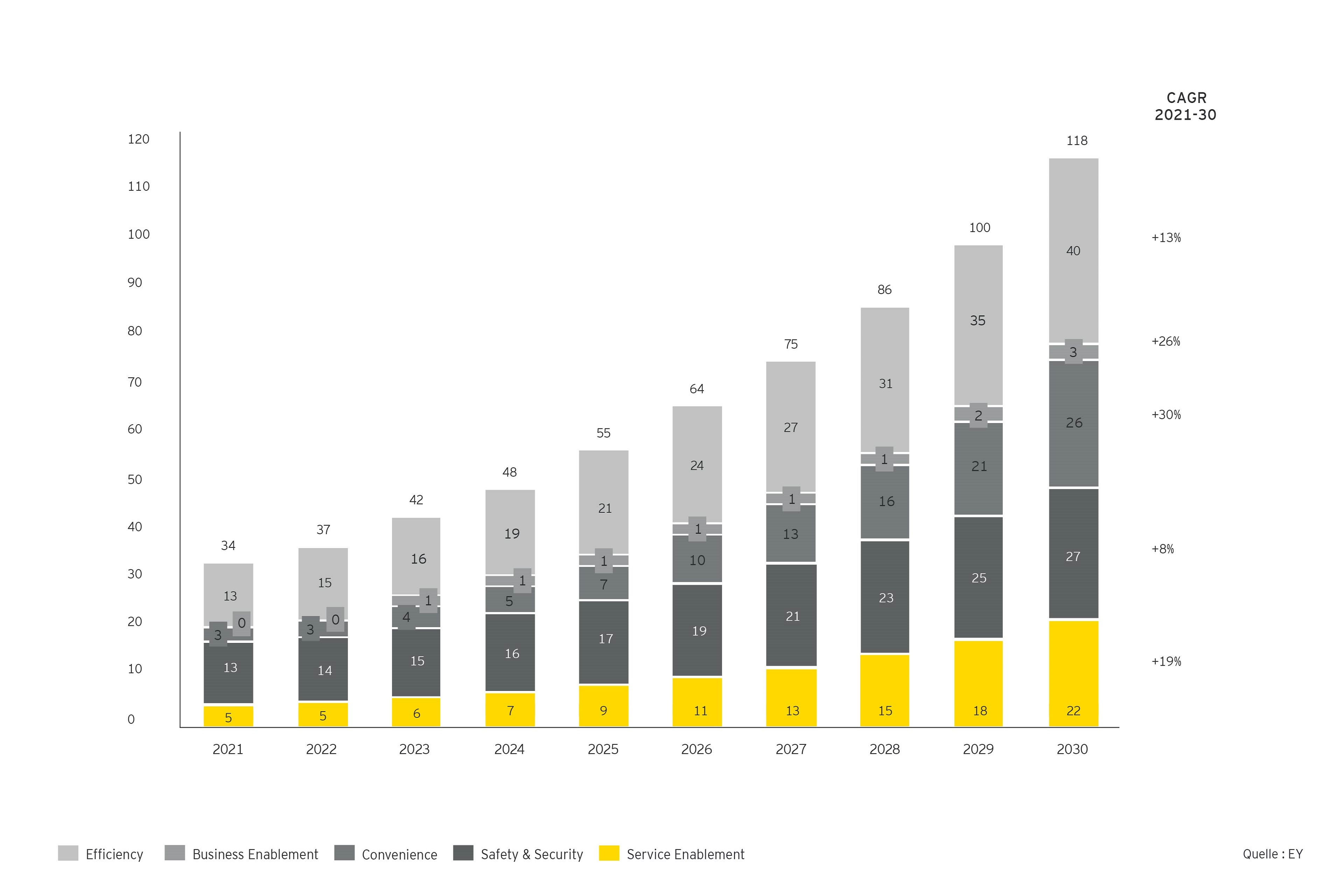
The first essential step towards a successful transformation is the identification of SDV-related value pools. This includes an assessment of consumer behaviour, consumer demands and further technical development, as well as a deep understanding of the emerging software value pools along the SDV tech stack: How will digital services evolve in the context of V2X technologies? To what extent will there be a "commoditisation" of functions and features? According to EY's forecaster, the main use case value pools are in the areas of "efficiency", "convenience" and "safety", but also "business and service enablement".
However, before making further investments in market, organisational and technological terms, they need to check their general software business readiness. EY's special Software Capability Fit Framework offers a holistic view through an end-to-end analysis to break down key capabilities into actionable dimensions, providing clarity on challenges, opportunities, imperatives, and economic implications.
2. Preparing People, Organization, Technology and Capital for the transformation
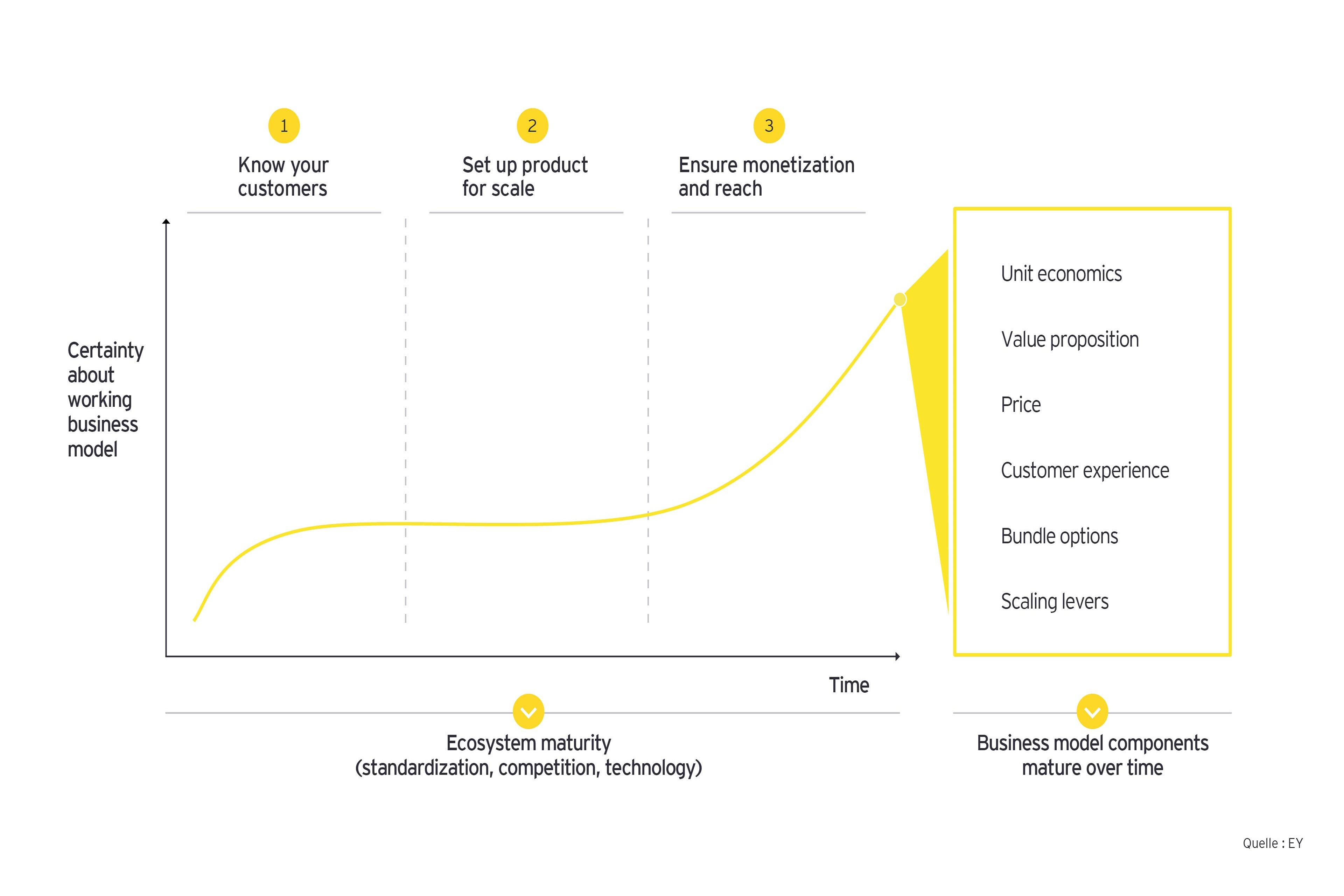
The second step is to mobilize people, organization, technology, and capital around a working business model to unlock the value pools identified. Not only are OEMs and suppliers in the automotive industry new to selling software or hardware-software bundles, but the ecosystem is evolving rapidly and requires many different players to work together. Moving forward requires a deep understanding of customer problems, rapid learning cycles, effective scaling levers, and a roadmap for both monetization and software quality assurance.
3. Continuous monitoring and adjustment of the transformation process
The third step is to keep the transformation manageable by constantly monitoring relevant and agreed-upon transformation KPIs. Whether it is software quality, delivery capability, cost reduction, new digital revenue, increased customer retention, or increased shareholder value, only what is tracked can be acted upon. This in turn requires structures that facilitate rapid decision making.
To sum it up, according to EY's assessment, companies that are now focusing on the future topic of SDV should first initiate the following measures: Reviewing their own big bets in the context of a suitable SDV strategy, taking an honest stock of their own capacities and capabilities, upgrading the non-working areas in the company - and finally clarity about the fact that the road to success can still be long and that this is precisely why a corresponding roadmap including certain checkpoints is needed.
Summary
Underestimating the software-hardware transformation is not an option for suppliers and automakers. However, the window of opportunity is closing, and the entire ecosystem is preparing to move from a more experimental storming phase to a profitable large-scale software business. This process does not happen overnight, and there is not enough capital left to make bad bets. That's why suppliers and OEMs need to assess where they are now, prepare their organizations for the next step, and make sure they don't run out of gas along the way.
Related articles
How to forge successful partnerships in the automotive supplier industry
Get your bearings from EY’s new study “Partnerships 2.0. New rules for successful partnerships in the automotive supplier industry”.



